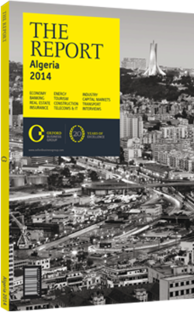Public and private investments aim to make the country self-sufficient in cement
Algeria continues to have a significant gap between cement demand and production capabilities. Both the state and private operators have been increasing domestic capacity. But amidst a nationwide effort to develop infrastructure, a housing programme prioritised by the government to reduce the housing gap and an economic dynamism that is galvanising private construction across major urban centres, local production does not currently meet the demand for cement.
Boosting Production
According to figures by the Global Cement Directory, Algeria’s cement production currently stands at 21m tonnes per annum (tpa). This is supplied by 19 production units. However, the level of consumption exceeds domestic supply, with the country needing an additional 4m-5m tonnes of cement every year, bought from overseas markets. This has a heavy impact on the country’s national import bill, and with multiple large-scale construction projects taking place around Algeria, import levels have been rising rapidly. In 2013 the country imported €290m worth of cement, a 26% increase in comparison to 2012.
Plans to increase production are shaping up. The state-owned Groupe Industriel des Ciments d’Algérie (GICA), which accounts for 12m tpa, is investing €1.4bn with the goal of increasing production capacity to 26m tpa by 2017 through the creation of new production units as well as the expansion of existing ones. The stateowned producer is building ten new production lines; six will be expansions in existing factories and the remaining four will be new factories. In the province of Oum El Bouaghi, GICA is building a 2m-tpa factory, as well as 1m-tpa unit in Béchar in the south-west of Algeria. Tamanrasset in the south and Relizane, between Oran and Algiers, will also get new cement factories.
Entreprise Portuaire d’Annaba, a state-owned company which manages the port in the eastern city of Annaba, has also announced it is considering building a 550,000-tpa floating offshore production unit.
In addition to the existing demand in the market, there are other reasons making Algeria a good location for cement production. There is abundant supply of limestone and the price of energy is affordable thanks to the use of gas as feedstock. These conditions have certainly been attracting attention from international investors. In February 2014 South African cement producer PCC bought a 49% stake in local Hodna Cement. The investment is linked to a planned AD28bn (€260.4m) cement factory in the M’Sila province. The new 2m-tpa plant will be operational by June 2016. Other projects are also in the pipeline. Expected to have a huge impact on local production capacity, Algerian group Cevital recently received approval to build a cement factory with a production capacity of 8m tpa in Constantine. Some 50% of its production will be for the local market, with the remaining 50% channelled for exports.
Securing Resources
The move comes after Cevital Minerals, the mining arm of the group, paid AD3.08bn (€28.6m) for exploration rights of a limestone deposit in Djebel Oum Settas in Constantine in a 2013 public tender. A similar state tender sold exploration rights to another limestone deposit in Bouïra for AD700m (€6.5m) to Cilas, a subsidiary of the French cement producer Lafarge. The Algerian National Agency for Mining Resources has stated that under the mining tender regulations, exploration rights to the limestone deposits would only be given under a commitment to use them in planned cement production units, in order to accelerate construction of new cement factories.
Lafarge and GICA are adding a new production line at their shared cement factory in Meftah. The French group is also preparing to start operations of a new 2. 7mtpa production unit in Biskra in 2015.
By 2022 cement production is expected to reach 42m-44m tpa, but excessive construction of new production lines might eventually leave the country with too much capacity. Exporting might become an option, although Algeria would be competing with several regional neighbours exporting cement. In the meantime, however, added production capacity will find a willing market in the projects taking place across Algeria.
You have reached the limit of premium articles you can view for free.
Choose from the options below to purchase print or digital editions of our Reports. You can also purchase a website subscription giving you unlimited access to all of our Reports online for 12 months.
If you have already purchased this Report or have a website subscription, please login to continue.

